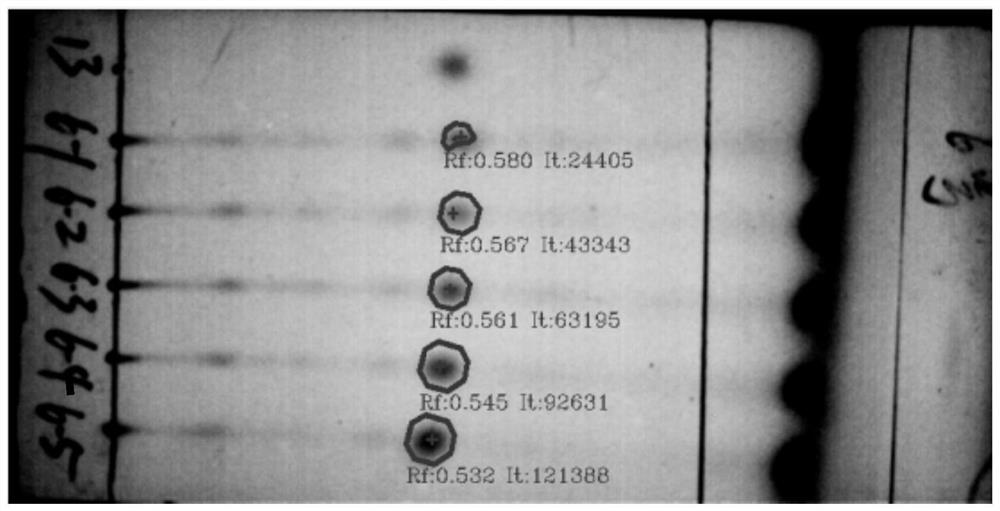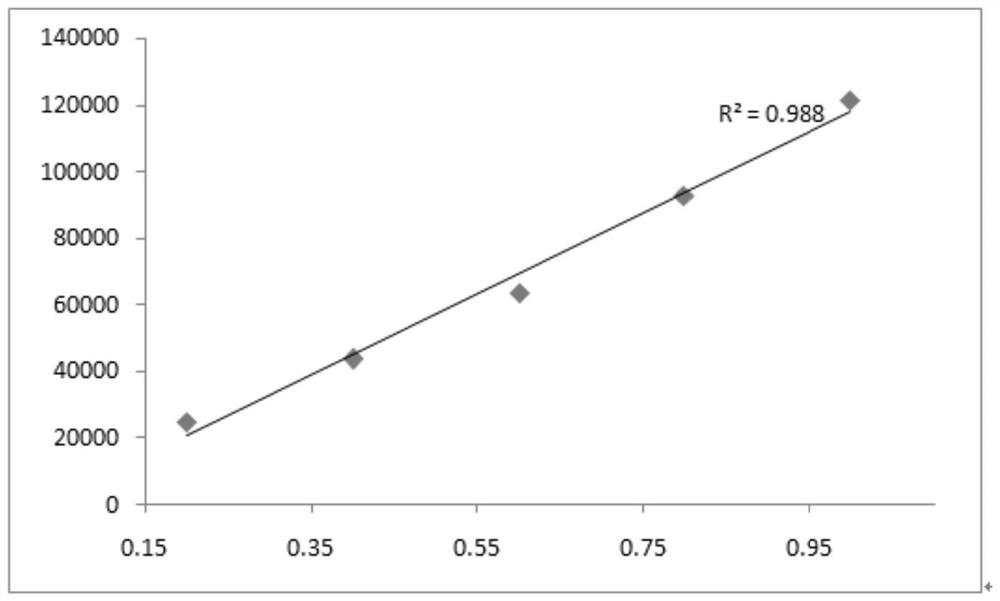In-situ rapid detection method for acetamiprid in vegetables or fruits
A detection method, acetamiprid technology, applied in the field of food science, can solve problems such as complex methods, and achieve the effect of simple method, fast processing speed and low cost
- Summary
- Abstract
- Description
- Claims
- Application Information
AI Technical Summary
Problems solved by technology
Method used
Image
Examples
Embodiment 1
[0022] (1) Sample preparation
[0023] The sampling amount of vegetables and fruits shall be carried out in accordance with GB / T8855. Random sampling of 1 kg of edible fungus samples shall be carried out in accordance with the provisions of GB 2763. After taking samples, chop them up, mix them thoroughly, and use the quartering method to sample or put them directly. Put it into a tissue masher and mash it into a homogenous slurry, and put it into a polyethylene bottle.
[0024] (2) QuEChERS extraction
[0025] Weigh 10g of sample into a 50mL plastic centrifuge tube, add 20mL of acetonitrile, shake for 2min, then add extraction salt bag and 1 ceramic homogenate to the filtrate, shake vigorously for 1min, and let stand at room temperature for 1-3min.
[0026] Further, the extraction salt package is composed of 4g of anhydrous magnesium sulfate, 1g of sodium chloride, 1g of sodium citrate, and 0.5g of disodium hydrogen citrate.
[0027] (3) m-PFC purification
[0028] Take 1.5...
Embodiment 2
[0035] The instrument used in the following examples is a high-efficiency thin-layer pesticide residue tester provided by Shanghai Ruixin Technology Instrument Co., Ltd. The principle of the rapid measuring instrument is to place the sample under a purple low-pressure mercury lamp (254nm), adopt high-sensitivity spectral image recognition technology, and automatically perform two-way scanning imaging to quantitatively analyze acetamiprid.
[0036] Six kinds of fresh vegetables, including Chinese cabbage, tomato, cucumber, green cabbage, water spinach, and head cabbage, were selected as substrates. After the fresh samples were minced, they were directly put into a tissue masher to be mashed into a homogenate, and then put into polyethylene bottles. Weigh 6 samples of each matrix, weigh 10g of each sample into a 50mL plastic centrifuge tube, add 20mL of acetonitrile, add extraction salt bag and 1 ceramic homogenizer, shake vigorously for 1min, and let stand at room temperature f...
Embodiment 3
[0042] The instruments used in the following examples are the high-efficiency thin-layer pesticide residue analyzer provided by Shanghai Ruixin Technology Instrument Co., Ltd. and the Xevo TQ-S liquid mass tandem mass spectrometer provided by Waters Technology (Shanghai) Co., Ltd.
[0043] Cucumber and green vegetables were selected as substrates, and after being treated respectively according to the method of the present invention and national standards GB 3200.121-2021 and GB / T 20769-2008, the residual amount of acetamiprid was determined.
[0044]As can be seen from Table 2, there was no significant difference in the recovery rate and standard deviation of acetamiprid among the three methods. But standard methods require large instruments and are not suitable for rapid testing. In this experiment, the m-PFC column was used, the extraction and purification were completed in one step, the amount of reagents was small, the extract did not need to be dried and concentrated, the...
PUM
| Property | Measurement | Unit |
|---|---|---|
| recovery rate | aaaaa | aaaaa |
Abstract
Description
Claims
Application Information
 Login to View More
Login to View More - R&D
- Intellectual Property
- Life Sciences
- Materials
- Tech Scout
- Unparalleled Data Quality
- Higher Quality Content
- 60% Fewer Hallucinations
Browse by: Latest US Patents, China's latest patents, Technical Efficacy Thesaurus, Application Domain, Technology Topic, Popular Technical Reports.
© 2025 PatSnap. All rights reserved.Legal|Privacy policy|Modern Slavery Act Transparency Statement|Sitemap|About US| Contact US: help@patsnap.com



